Brad Ford and The Hudson Company Team Up for a Connecticut Showroom That Emphasizes Craftsmanship
When Jamie Hammel bought what was then known as Antique and Vintage Woods of America eight years ago, he recalls, "I thought the product was beautiful, but it wasn't being presented beautifully." Fast forward nearly a decade and Hammel is operating what is now The Hudson Company, providing new and salvaged wood surfaces to architects and designers for projects (including, most notably, Renzo Piano's Whitney Museum) in the New York area and beyond. And his latest showroom is proof that beautiful presentation is core to the brand.
The Hudson Company's third location is in a woodsy area of Ridgefield, Connecticut. "So many of our clients co-locate between the city and a house upstate or in Connecticut or the Hamptons," Hammel explains of the choice. "We have the mill, in Pine Plains, so that helps us cover that territory, but we didn't really have a presence in Connecticut. Ridgefield is a beautiful town and is not in the heart of Greenwich." He clarifies: "Being on Greenwich Avenue would feel just like our Manhattan showroom. This is a little bit off the beaten path, but it's central to both Westchester and Connecticut."
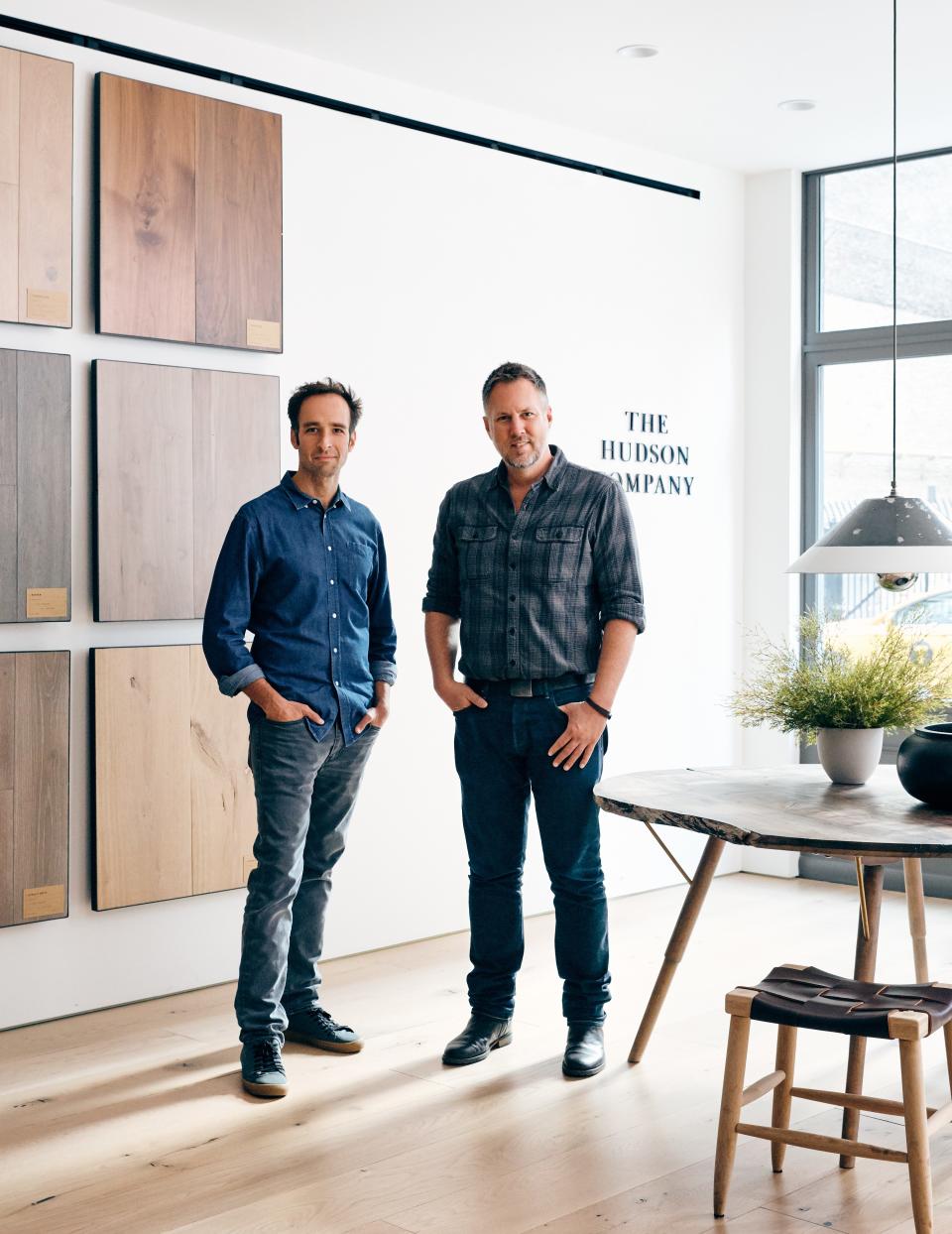
The showroom, a renovated, 1,400-square-foot barn situated next to a creek, provides the perfect rustic-elegant setting for the company's line of fine woods. To fine-tune its design, Hammel turned to Brad Ford, a longtime friend. In a true case of design-world fate, the two were connected a few years ago when Wayne Dickinson, the manager of The Hudson Company's Manhattan showroom and a friend of Ford's from their childhoods in Arkansas, spotted a near decade-old photo of Ford with a project he'd done for Moore & Giles, ripped from a magazine and pinned above Hammel's desk in Pine Plains. "He sees this tear-out and says, 'You know who that is? That's my really good friend Brad,'" Hammel recalls. "So we made this connection. Since then, we have done many, many collaborations." Among them: renovating the company's Manhattan showroom, working on projects for Ford's Field & Supply Fair, and cocurating a chair exhibition this past spring.
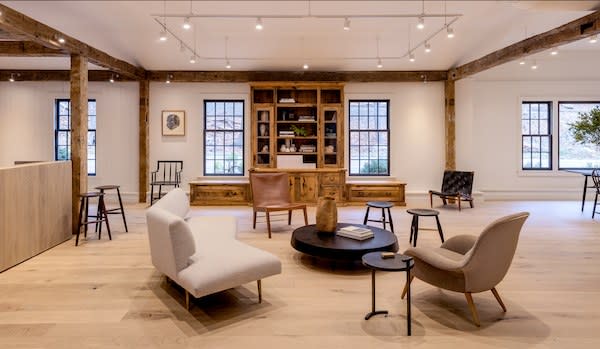
"When he first approached me about designing a showroom, I said no," Ford says with a laugh. "I was so busy! That was when I learned that when Jamie gets something in his head, he does not let go. He plows through."
"We call that persistence," quips Hammel.
"He just kept on and on, until finally I was like, 'Fine,'" Ford says. "And it was the start of a great relationship. He's always really enthusiastic about trying new things and exploring new concepts."
"At the Hudson Company, we work with architects and designers all the time, so I'm familiar with the client-architect relationship, but mine with Brad is different," Hammel says of their collaborative process. "There's a comfort level that you don't find every day."
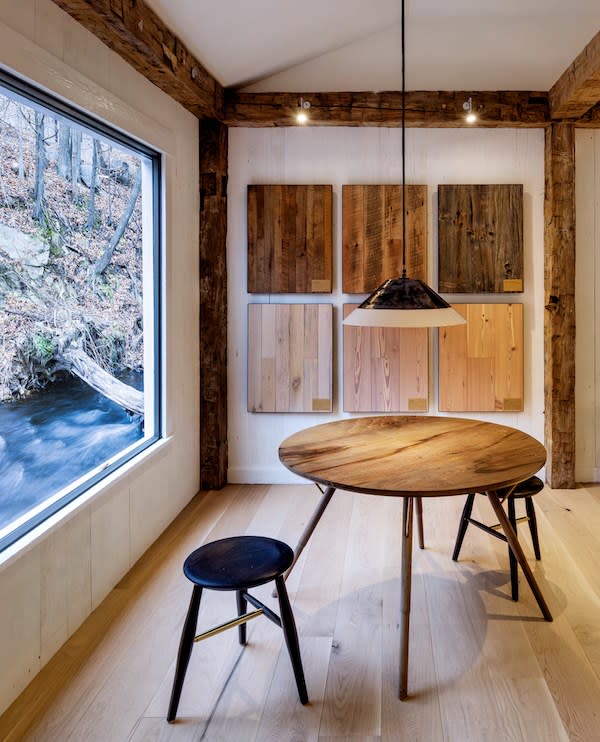
That's probably because, as Ford points out, "the basis of this collaboration is really just craftsmanship, which I feel Jamie and I have a similar sense of ethos around—he's just focused on materials while I'm focused on furniture."
In the Ridgefield showroom, the two set about emphasizing that celebration of craftsmanship with a design process that, Hammel says, "was a lot of subtraction before addition."
"I think that's something I really love to do in a space," Ford explains. "Just strip it back and create some breathing room and see the rawness of a space. Once a lot of the stuff that was there came out, you could see that there wasn't a lot that needed to be added. There were just these good bones to the building." After unearthing the raw space, Ford and Hammel added rough-hewn beams and oak flooring to the space, giving it a warm, rustic feel befitting its surroundings.
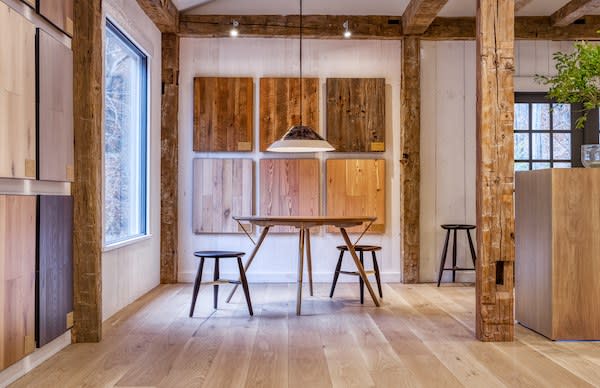
Of course, it's a showroom, and there were practical concerns, too: Ford decided to rip out a kitchen in the space to make more room for samples, which hang in squares that suggest a gallery wall.
Finally, to bring a bit more life into the space, Ford and Hammel brought in pieces from FAIR, all of whose natural materials and fine craftsmanship echo the founding principles of The Hudson Company. Plus, Ford says, "bringing in the pieces from FAIR creates some context and gives the opportunity to show that audience what we're offering in New York."
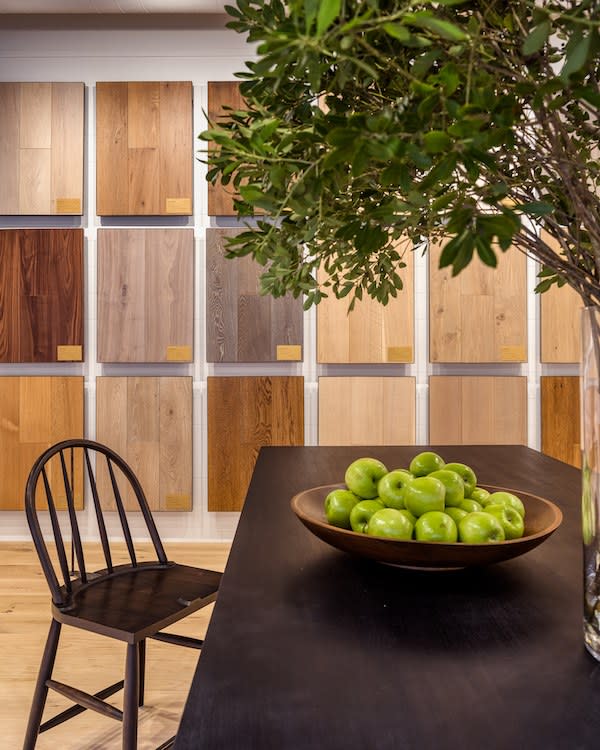
To both Hammel and Ford, it's a natural pairing. "Though we produce both reclaimed and new woods, the trend continues to be around reclaimed, and I think this is true of the maker culture too," Hammel muses. "Our clients love the narrative of a project, whether it's who made the stools from FAIR, or how was this raw material salvaged?"
"Definitely," Ford agrees. "And I think it's a reaction to some of the big-box stores that are churning out things quickly and not doing it well. I think that you do have to educate people about the value of these things and the hours it takes to make something, the skill set required. I think people are starting to understand that value more and more, as the lower quality furniture they've bought starts to deteriorate. I want people to start thinking again about heirlooms, and being able to pass things on from generation to generation."
More from AD PRO: Has Instagram Made Design Shows Better?
Sign up for the AD PRO newsletter for all the design news you need to know

